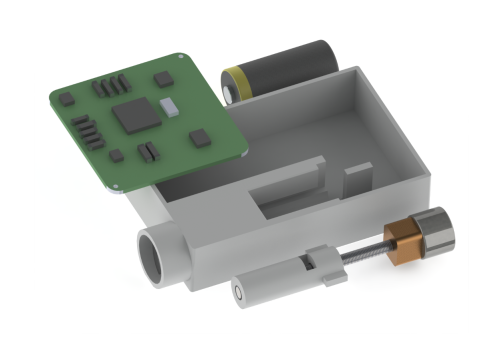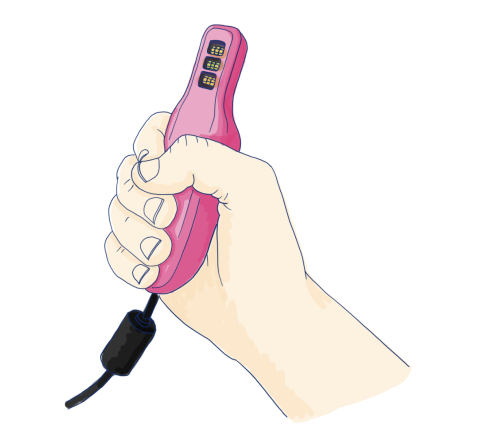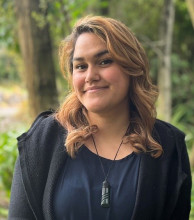Ending with Impact: Low-cost tech solution for diabetes treatment
Around 250,000 New Zealanders suffer from type-one or type-two diabetes and treatment costs alone are around $2.1 billion a year. Our researchers are changing the game.
Currently only 10 percent of people with type-one diabetes have access to modern insulin pumps and there is no funding for continuous glucose monitoring. By far the majority still use fingerprick blood glucose monitoring and manual insulin injections to manage their illness. Continuous glucose monitoring devices insert a small sensor into the belly or arm and measure glucose levels day and night. They’re more accurate and infinitely preferable for patients, but are not publicly funded and they’re expensive. Even an increase in funding of $200 million over four years would only be enough to give these devices to 38 percent of kiwi type-one diabetes patients.
Insulin pumps are no better. The few models that exist internationally are patented within the grip of the medical tech industry and cost around $10,000 per person plus an extra $2000 a year in consumables.
Finding an equitable solution is the focus of the SfTI research project Translating Disruptive MedTech Across the Innovation Chasm. The project is one of a suite of new projects that we’re funding to enable our major Spearhead research projects to ‘end with impact’. All National Science Challenges, including SfTI, will draw to a close in June 2024 and it’s vital that every drop of potential impact from our research is delivered. In a 2022 funding round, our Spearhead projects were invited to put forward ideas for research that has germinated out of their work of the past few years, and that with more time and investment could reap impactful rewards. This research stems from the spearhead project Home and community-based care – Type two diabetes.
The MedTech ending with impact team are cross-discipline and altruistic in character. They hope that combining their tech, digital and social research will produce a super low-cost, type-one diabetes solution that’s accessible to everyone.

Their ultra-low cost insulin pump uses simple technology and is expected to cost less than $150 – a 30 to 100-fold cost reduction on current pumps. Combining this with their world-first, non-invasive ultra low-cost continuous glucose monitor that uses LED lights to detect blood glucose levels means patients could receive the right insulin dose at the right time, without having to do anything themselves.

The University of Canterbury’s Dr Lui Holder-Pearson is a technical project leader along with Dr Jake Campbell.
“There are real inequities in access for the currently available technologies in New Zealand. Māori and Pasifika people are more likely to have diabetes and suffer worse outcomes. They also typically face greater socio-economic hardship so it’s a double burden. They’re two to five times less likely to have access to insulin pumps than Pakeha,” Lui says.
“There are real inequities in access for the currently available technologies in New Zealand. Māori and Pasifika people are more likely to have diabetes and suffer worse outcomes. They also typically face greater socio-economic hardship so it’s a double burden. They’re two to five times less likely to have access to insulin pumps than Pakeha,” Lui says.
“It’s exciting to be part of this team because we’re not motivated by profit. We want these devices to be available to everyone.”
The team’s light-based continuous glucose monitor is showing strong promise with an initial clinical trial proving its accuracy is up there with the invasive sensor models currently on the market.

“The testing we’ve done to date is on glucose readings in the lower ranges, where it’s critical to be accurate. We expect the good accuracy that we’re seeing down low to be even better in higher ranges with our light-based sensing method,” Lui says.
Like its competitors, their insulin pump is a simple screw-based device that pushes a plunger forward, delivering variable doses as required. The pump is unique and can be cheaply produced because unlike those competitors, the software algorithms running the pump have been separated from the device itself.
“In the existing pumps, the software’s the big proprietary cost, but we’ve made our algorithm available to anyone for free.”
University of Otago Senior Lecturer and paediatric endocrinologist Dr Martin De Bock is a strong supporter, providing clinical oversight to the team.
“It’s difficult to look after a patient with diabetes because managing insulin correctly requires thousands of decisions per day and the finger stick method is only giving about 4-6 readings a day. Current continuous glucose measuring isn’t ideal either. It’s invasive, it has to be replaced every 10 to 14 days, people have skin reactions to the tape . . . the holy grail is a non-invasive option, so this research is super exciting.”
Martin says that while insulin pumps have been around since the 1990s, the technology hasn’t progressed much since then.
“The pump is only going to give as much insulin as the algorithm tells it to, so separating that out and making an automation solution open source is how we can make these devices accessible for people.”
Based on computer modelling, software and other data, the algorithm will direct the insulin pump to give constant subtle ministrations of insulin, based on continuous readings from the non-invasive continuous glucose monitor, removing over and under dosing errors and the burden of these calculations from patients.
University of Canterbury Distinguished Professor and SfTI Senior Leader Geoff Chase oversees the project.
“This is an artificial pancreas solution that’s disruptive to existing markets. These technologies are world-leading in cost, power consumption and capability and would make New Zealand a leader in diabetes care.”
Another significant aspect of the project is the energy the team is putting in to co-designing their products with end-users. Canterbury University Lecturer Dr Jennifer Wong is researching the psychological and social aspects of living with and managing diabetes. She is looking beyond the patient to the disease’s impacts on family, friends and trusted heath advisers.
“We’re asking how whānau can be involved and how that can increase the level of trust people have in this new technology, which will improve its uptake.”
As one idea, the team are exploring creating an online social media channel so users can form a supportive community. A website has also been set up at leaps.nz (leaps stands for low-cost, equitable, artificial pancreas system).
“We’re asking what we might need to do to have champions in the community who can encourage others to try the devices, as well as asking health providers what they would need to accept the new tech.”
Jennifer will be working with patients, doctors and nurses and using her background in workplace psychology to support the team, starting with hui in Taranaki and the Far North – opportunities that have been arranged by the team’s project leader Māori, Dr Grace Walker who is a researcher and director of the research consultancy Think Analytic.

Grace is drawing on her long-standing relationships with rural communities to broker a trust-based opening for the team.
“The people have said this is one of the first times they’ve had the opportunity to be involved with something while it’s going through the process of development, rather than just being offered a product at the end,” Grace says.
“There are so many people who want to know more about this research. They want to know when it will be available and if they can be involved in the pilot. We’re really pleased that people want to be part of it.”
Grace says another positive outcome will be engaging rural rangatahi in the possibilities of engineering and a career in STEM. She says working on the project has been rewarding and also a chance to reconnect with her own whānau.
“This has been a really exciting project to be part of. The team value my advice and guidance because they know it will help them to be more efficient and successful.”
With Grace’s support, Jennifer’s team will visit these rural communities to learn how the devices can be tailored to meet people’s needs.
“Communication is going to be key. We will be hearing from communities and taking it back to the tech teams so they can make adjustments, and we can end up with the best products that people will want to use.”
Although the team are working on low-cost solutions and freely available software, there are still considerable commercialisation opportunities beyond the technology itself.
“In the future, there could be optional upgrades and services. You could run the whole system on your phone, receive you own data and get tips as well as personalised advice from a dietician,” Lui Holder-Pearson says.
The project is funded for $995,000 to March 2024. Read about all of our ending with impact projects.